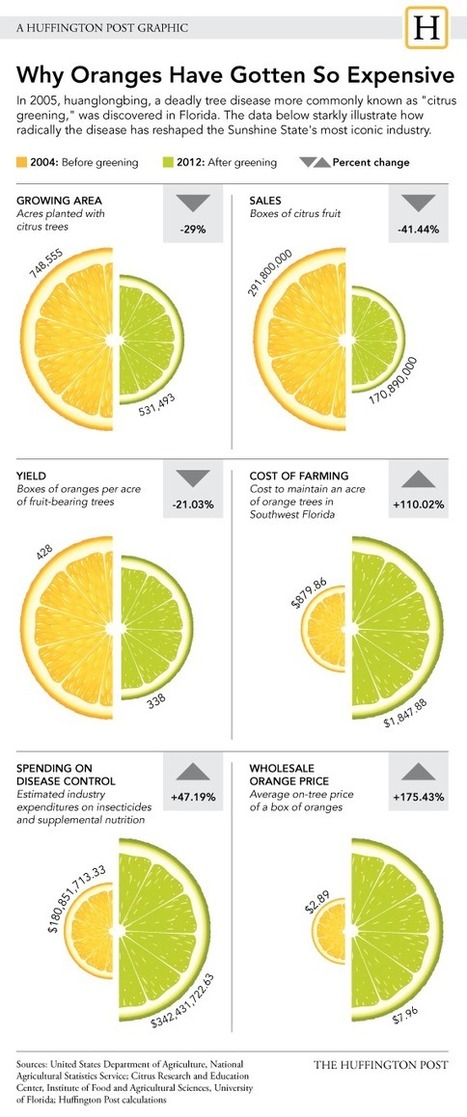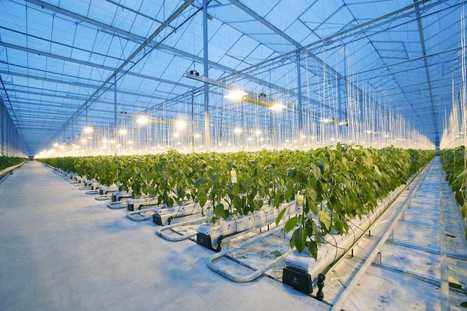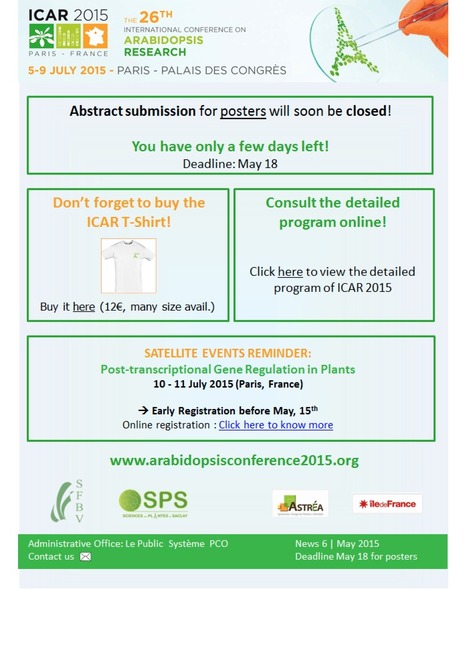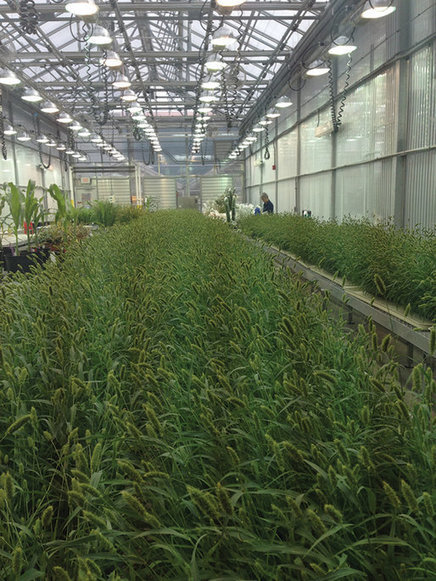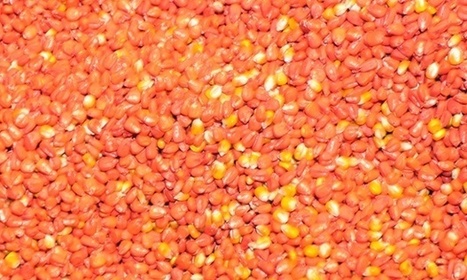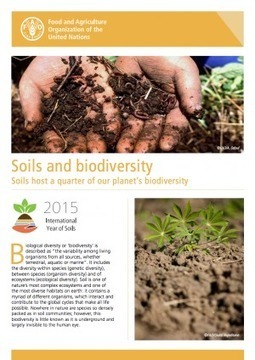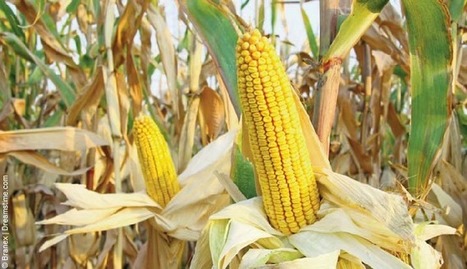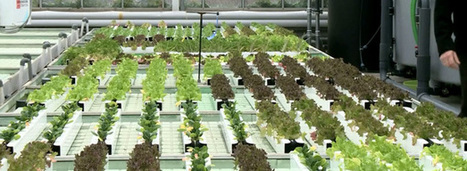 Your new post is loading...
 Your new post is loading...
The Environmental Protection Agency announced last week that it has given major Florida citrus grower Southern Gardens approval for large-scale field testing of citrus trees that have been genetically engineered to resist citrus greening, a ruinous disease that has caused orange production to plummet to the lowest levels seen in decades.
As New York Times reporter Amy Harmon explained in a terrific feature in July 2013, Southern Gardens, a division of U.S. Sugar Corporation, the country's largest sugar producer, has been developing the trees for years now. Their genome has been modified to include a gene from spinach plants that produces a protein that makes citrus trees inhospitable to the bacteria that cause citrus greening. Though scientists and citrus growers are exploring several possible treatments for greening, which currently has no cure, many believe that the genetically modified tree offers the best chances of success.
Via Christophe Jacquet

|
Scooped by
Saclay Plant Sciences
May 15, 2015 6:46 AM
|
Fascination of Plants Day May 18 2015, France

|
Scooped by
Saclay Plant Sciences
May 13, 2015 4:12 AM
|
Abstract submission deadline for posters only: May 18, 2015

|
Scooped by
Saclay Plant Sciences
May 13, 2015 3:20 AM
|
Nature Plants, Published online: 5 May 2015; | doi:10.1038/nplants.2015.62
91 En septembre, les étudiants feront leur première rentrée officielle dans le nouveau campus Paris-Saclay (Essonne). Le décret créant de ce...
Via Univ Paris-Saclay

|
Scooped by
Saclay Plant Sciences
May 9, 2015 1:18 PM
|
L’Inra, Arvalis-Institut du végétal et les groupements de défense sanitaire constituent le podium des organismes jugés les plus utiles par les...

|
Scooped by
Saclay Plant Sciences
May 7, 2015 1:53 AM
|

|
Scooped by
Saclay Plant Sciences
April 30, 2015 8:19 AM
|
L’institut Jean-Pierre Bourgin, situé sur le Centre Inra de Versailles-Grignon, dispose d’environ 5500 m2 de serres et 500 m2 de chambres dédiées à la culture de…

|
Scooped by
Saclay Plant Sciences
April 30, 2015 8:17 AM
|
Le Phénoscope est une plateforme scientifique de phénotypage haut débit chez Arabidopsis thaliana située à l'Institut Jean-Pierre-Bourgin (Centre INRA de Versailles-Grignon). Il…
Plant starches regularly require extensive modification to permit subsequent applications. Such processing is usually done by the use of chemical and/or physical treatments. The use of recombinant enzymes produced by large-scale fermentation of GM microorganisms is increasingly used in starch processing and modification, sometimes as an alternative to chemical or physical treatments. However, as a means to impart the modifications as early as possible in the starch production chain, similar recombinant enzymes may also be expressed in planta in the developing starch storage organ such as in roots, tubers and cereal grains to provide a GM crop as an alternative to the use of enzymes from GM microorganisms. We here discuss these techniques in relation to important structural features and modifications of starches such as: starch phosphorylation, starch hydrolysis, chain transfer/branching and novel concepts of hybrid starch-based polysaccharides. In planta starch bioengineering is generally challenged by yield penalties and inefficient production of the desired product. However, in some situations, GM crops for starch bioengineering without deleterious effects have been achieved.
Via Christophe Jacquet

|
Rescooped by
Saclay Plant Sciences
from Plants and Microbes
April 27, 2015 5:29 AM
|
You are invited to attend a special day on wheat disease resistance at the John Innes Conference Centre on Friday 22 May 2015 in Norwich.
This day will bring together scientists, plant breeders, growers and policy-makers in a series of scientific seminars and networking. The day’s sessions will highlight current research and strategies for delivering increased and sustainable production of wheat in face of the many diseases that infect this crop.
Wheat is the most widely planted crop in the world and has an average production of 650 million tonnes per year, of which 65% is for human consumption. An increasing world population has placed substantial demands on wheat production, a battle exacerbated by the many and emerging diseases which can compromise crop quality and yield.
World-leading scientists from the John Innes Centre, The Genome Analysis Centre (TGAC), and The Sainsbury Laboratory (TSL) are carrying out strategic research into the biology and evolution of wheat diseases, as well as in the genomics and immune responses of wheat. These programmes, which further highlight the integrative and collaborative nature of research across these different institutes on the Norwich Research Park, are required to provide practical solutions to the significant challenge caused by wheat diseases in UK and worldwide.
Programme
9:30 Registration and refreshments
10:00 Introduction by John Snape (JIC)
10:10 Dr. Ravi Singh (CIMMYT): Approaches to develop and deliver high yielding, disease resistant wheat germplasm at CIMMYT
10:50 Introduction to the Norwich Rust Group
11:00 Dr. Cristobal Uauy (JIC)
11:25 Refreshments
11:50 Dr. Diane Saunders (TGAC/JIC)
12:15 Prof. James Brown (JIC)
12:40 Lunch
13:40 Dr. Kim Hammond-Kosack (Rothamsted)
14:20 Dr. Brande Wulff (JIC)
14:45 Dr. Matthew Moscou (TSL)
15:10 Refreshments
15:35 Dr. Paul Nicholson (JIC)
16:00 Dr. Ksenia Krasileva (TGAC/TSL)
16:25 Concluding remarks by John Snape (JIC)
16:30 Closing remarks
Via Kamoun Lab @ TSL
"A growing body of evidence suggests that alterations in transcriptional regulation of genes involved in modulating development are an important part of phenotypic evolution, and this can be documented among species and within populations. While the effects of differential transcriptional regulation in organismal development have been preferentially studied in animal systems, this phenomenon has also been addressed in plants. In this review, we summarize evidence for cis-regulatory mutations, trans-regulatory changes and epigenetic modifications as molecular events underlying important phenotypic alterations, and thus shaping the evolution of plant development."
Via Mary Williams
Seventeen new genetically modified food products will be authorised for import to Europe before the end of May in a significant acceleration of biotech trade, the Guardian has learned.
An announcement could be made as early as next week, sources said, when a meeting of EU commissioners has been pencilled in to review adoption of new rules for approving GM imports.
Europe currently imports around 58 GM products from abroad, mostly US maize, cotton, soy bean and sugar beet.
GM crops to be fast-tracked in UK following EU vote
Read more
But Greenpeace said that the US has raised the issue of a large logjam in biotech authorisations in talks over a free trade deal known as TTIP.
“With transatlantic trade talks ongoing, pressure has been mounting from the biotech industry and the US government to break open the EU market to GM imports and to speed up authorisation procedures,” Marco Contiero, Greenpeace EU’s agriculture director, told the Guardian. “The possible authorisation of 17 GM crops by the commission in the next few days is a likely result of this pressure.”
“The timing is still being discussed but it is just a question of internal procedure now,” a source familiar with the discussions told the Guardian. “It is clear that the 17 strains will be authorised at the same time as the review meeting or just after. I would say it will happen before the end of May for sure.”
Under proposed new GM import rules seen by the Guardian, future authorisations would automatically follow approval of new strains by the European Food and Safety Agency (Efsa). Individual countries would be given a similar opt-out to the one agreed for GM cultivation in a law passed earlier this year.
Advertisement
“It will be up to each member state wanting to make use of this ‘opt-out’ to develop this justification on a case-by-case basis, taking into account the GMO [genetically-modified organism] in question, the type of measure envisaged and the specific circumstances at national or regional level that can justify such an opt-out,” the draft said.
Opposition from some EU states to draft GM authorisations is “usually not based on science but on other considerations reflecting the societal debate existing in the country,” the commission argues. So opt-outs will not be granted to EU states who seek it on health or environmental grounds, after Efsa has deemed a product safe.
Via Christophe Jacquet
|
Le ‘I’ de AEI ne se réfère pas à ‘agriculture intensive’, bête noire des écologistes, mais correspond plutôt à une « agriculture qui utilise intensivement les fonctionnalités des systèmes productifs »(4), c’est-à-dire le fait de combiner en les amplifiant certaines méthodes écologiques pour créer des synergies productives tout en réduisant les atteintes à l’environnement. C’est l’aspect écologique qui est intensif.
Via Isabelle Pélissié

|
Scooped by
Saclay Plant Sciences
May 15, 2015 1:50 AM
|

|
Scooped by
Saclay Plant Sciences
May 13, 2015 3:39 AM
|

|
Scooped by
Saclay Plant Sciences
May 13, 2015 2:08 AM
|

|
Scooped by
Saclay Plant Sciences
May 11, 2015 10:39 AM
|
A doctorate is the highest qualification in higher education, and is the flagship diploma of large international universities such as Université Paris-Saclay.Focus on the Université Paris-Saclay doctorate:
teosinte glume architecture1 (tga1), a member of the SBP-box gene family oftranscriptional regulators, has been identified as the gene conferring naked kernels inmaize vs. encased kernels in its wild progenitor, teosinte. However, the identity of thecausative polymorphism within tga1 that produces these different phenotypes has remained unknown. Using nucleotide diversity data, we show that there is a single fixed nucleotide difference between maize and teosinte in tga1, and this difference confers a Lys (teosinte allele) to Asp (maize allele) substitution. This substitution transforms TGA1into a transcriptional repressor. While both alleles of TGA1 can bind a GTAC motif, maize-TGA1 forms more stable dimers than teosinte-TGA1. Since it is the only fixed difference between maize and teosinte, this alteration in protein function likely underlies thedifferences in maize and teosinte glume architecture. We previously reported a differencein TGA1 protein abundance between maize and teosinte based on relative signal intensityof a western blot. Here, we show that this signal difference is not due to tga1 but to asecond gene, neighbor of tga1 (not1). not1 encodes a protein that has 92% amino acidsimilarity to TGA1 and that is recognized by the TGA1 antibody. Genetic mapping and phenotypic data show that tga1, without a contribution from not1, controls the difference incovered vs. naked kernels. No trait differences could be associated with the maize vs. teosinte alleles of not1. Our results document how morphological evolution can be drivenby a simple nucleotide change that alters protein function.
Via Loïc Lepiniec

|
Scooped by
Saclay Plant Sciences
May 6, 2015 2:03 AM
|
Pamela Ronald isolates genes in rice that feeds millions. Her integrative approach to agriculture could be an even bigger game-changer.

|
Scooped by
Saclay Plant Sciences
April 30, 2015 8:18 AM
|
Un spectromètre de masse couplé à un système de chromatographie en phase liquide Début 2015, la plateforme de Chimie/Métabolisme de l’Observatoire du Végétal…

|
Scooped by
Saclay Plant Sciences
April 29, 2015 3:20 AM
|
L'Europe met un bémol à l'essor des biocarburants

|
Scooped by
Saclay Plant Sciences
April 29, 2015 2:22 AM
|
L'association de l'aquaculture et de l'hydroponie a de quoi séduire sur le papier. Pour estimer son potentiel et les conditions nécessaires à son développement, la France a lancé le projet Apiva.
Via Pôle Veille AgroParisTech
"We communicate the rather remarkable observation that among 291 tested accessions of cultivated sweet potato, all contain one or more transfer DNA (T-DNA) sequences. These sequences, which are shown to be expressed in a cultivated sweet potato clone (“Huachano”) that was analyzed in detail, suggest that an Agrobacterium infection occurred in evolutionary times. One of the T-DNAs is apparently present in all cultivated sweet potato clones, but not in the crop’s closely related wild relatives, suggesting the T-DNA provided a trait or traits that were selected for during domestication. This finding draws attention to the importance of plant–microbe interactions, and given that this crop has been eaten for millennia, it may change the paradigm governing the “unnatural” status of transgenic crops. "
Via Mary Williams
|



 Your new post is loading...
Your new post is loading...

